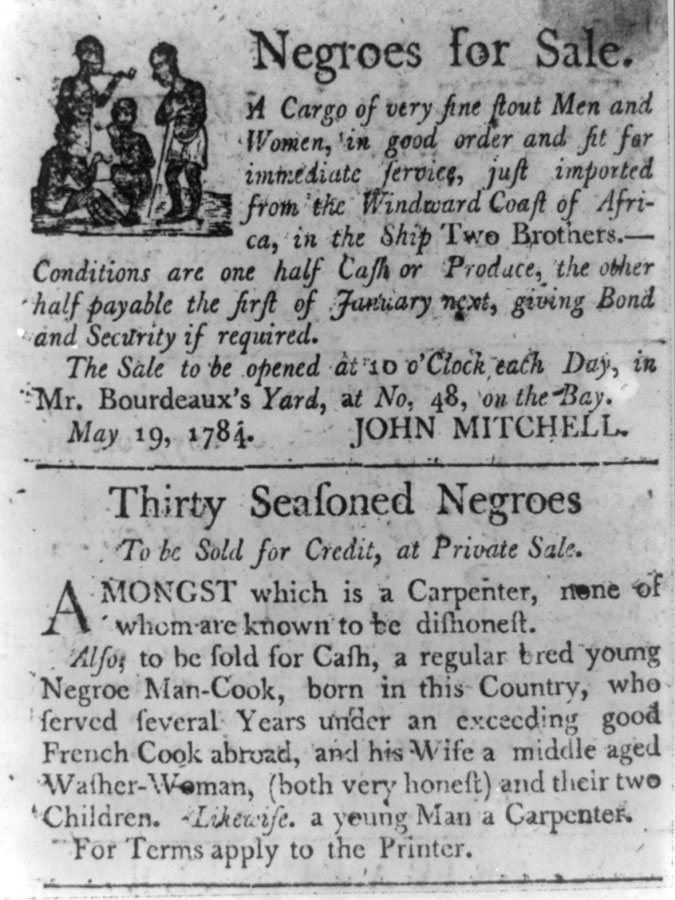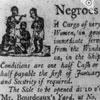The slave system evolved over more than a century, beginning with the arrival of the first Africans in Jamestown in 1619. By the mid-18th century, slavery was firmly entrenched in the colonial economy and culture. It was common to encounter notices similar to this 1784 broadside announcing slave sales. As you read it, consider what it says about the value of slaves and slavery in colonial Virginia.
By the end of the 17th century, slaves were defined as property and appeared in the law code and business transactions in much the same way as real estate. Slaves could not enter into contracts, so their marriages had no legal standing. They formed strong familial relationships, despite these laws, as well as networks for passing along information, survival techniques, and various forms of resistance to their condition of servitude.
Free blacks were also subject to restrictions on their activities. By the 1770s, about 20 percent of the population in the 13 English colonies was of African descent. Most lived in the Chesapeake region and worked on tobacco plantations and farms. Slaves were a valuable source of labor for their owners, and a significant investment.
This broadside does not specify the location of the sale, but such auctions took place up and down the eastern seaboard during the 17th and 18th centuries, and it was not uncommon for both slaves and livestock to be sold at the same auctions. This advertisement describes the sale of men and women from Africa “in good order and fit for immediate service” – which is notable given the often deadly conditions of the passage from Africa to the Americas. It also advertises “Thirty Seasoned Negroes,” and specifically mentions that none are reported to be “dishonest.” Such character and behavior judgments were common in both slave sale notices and runaway advertisements.
Source: “Advertisement for Slave Sale, 18th cent.,” still image, 1784, The Atlantic Slave Trade and Slave Life in the Americas: A Visual Record, by Jerome S. Handler and Michael L. Tuite Jr., accessed September 20, 2018.













